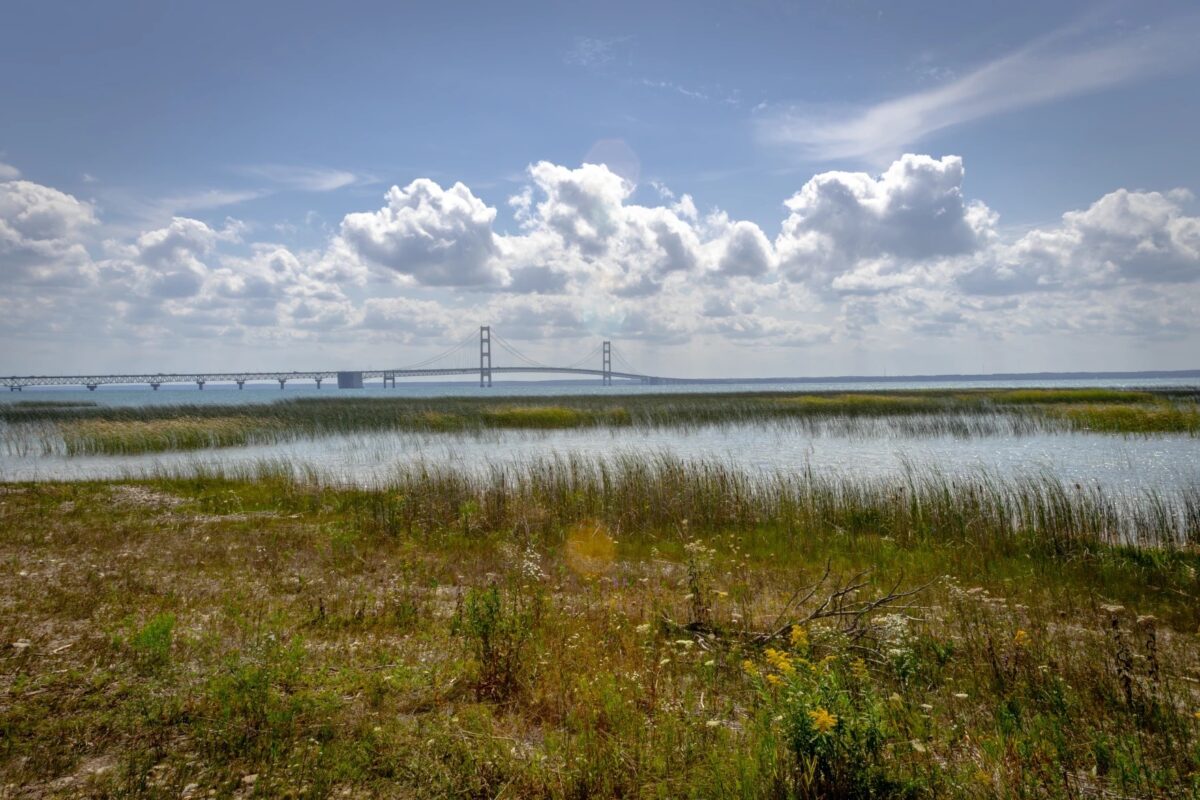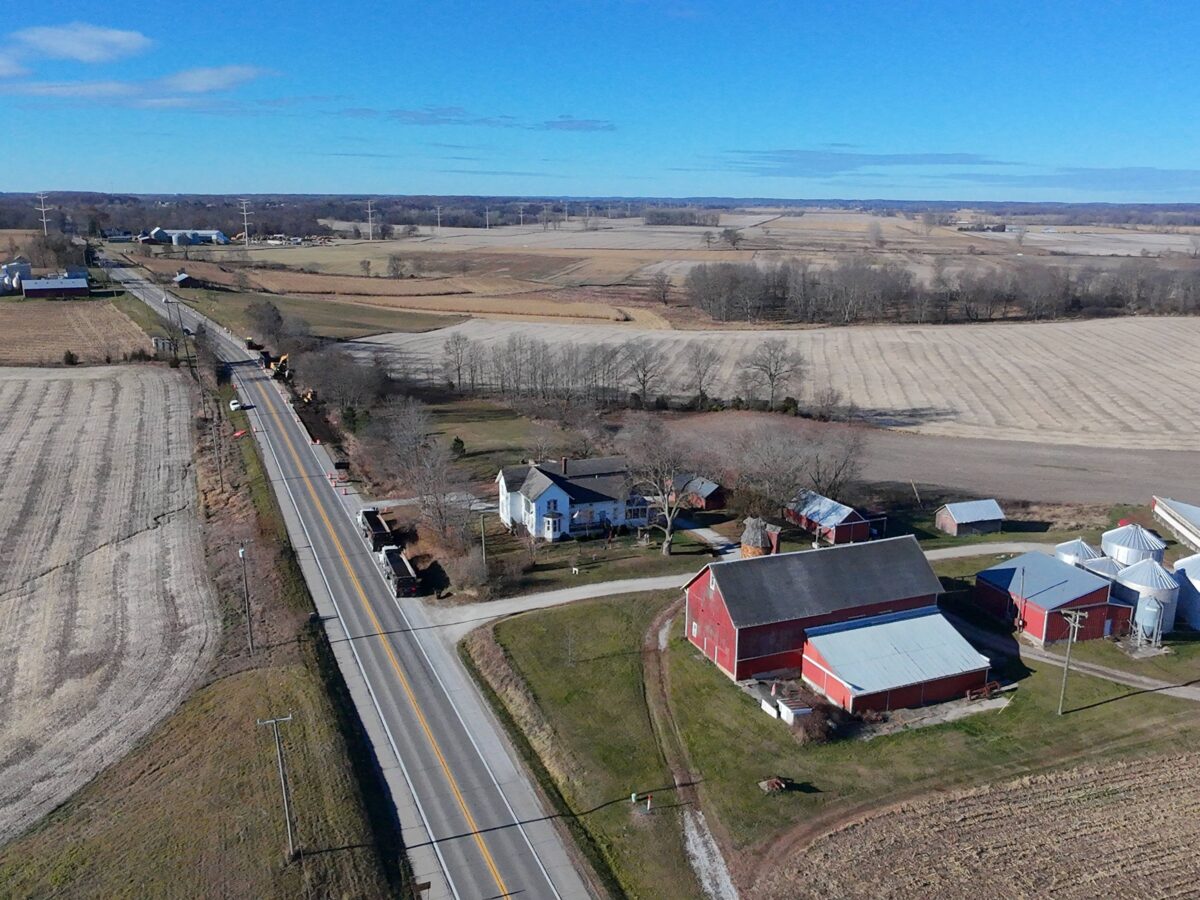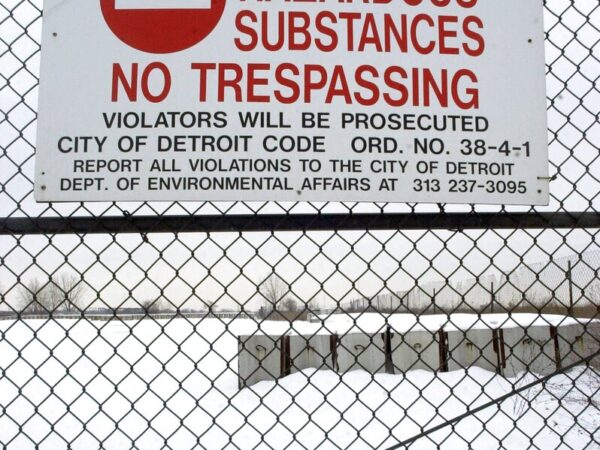Overview:
-Enbridge's project seeks to house a new oil pipeline section under the Straits of Mackinac.
-Trump’s executive order allows emergency permits to be used to boost energy supplies, especially fuels like oil and natural gas.
-"We will continue to defend the rights of the Great Lakes. See you in court," says Bay Mills Indian Community's president.
This coverage is made possible through a partnership between IPR and Grist, a nonprofit environmental media organization.
The federal review of the Line 5 tunnel project will be sped up under new emergency permitting procedures announced by the Army Corps of Engineers this week.
Those procedures were established under President Donald Trump’s executive order declaring a national energy emergency, which cleared the way for energy projects to receive emergency status.
While the tunnel project’s emergency status will speed up the Army Corps’ review, it’s not clear exactly how much faster it will be.
“We’re not eliminating steps. The emergency procedures as outlined in regulation just truncate the general — the timelines, but we’re not eliminating any of the steps,” said Shane McCoy, the regulatory branch chief with the Army Corps’ Detroit District, speaking with reporters on Wednesday.
Trump’s executive order allows emergency permits to be used to boost energy supplies, especially fuels like oil and natural gas. In its announcement, the Army Corps said it had determined that the tunnel project qualified for a fast-tracked review.
Line 5 runs 645 miles from Wisconsin to Ontario, crossing about 4 miles of lakebed in the Straits of Mackinac. The Canadian company Enbridge wants to build a tunnel to house a new section of the pipeline underneath the straits.
REPORTING FROM PLANET DETROIT
Saline Township resident alleges data center settlement was improper: Township attorney says ‘everybody saw them vote’
Saline Township’s settlement with data center developer Related Digital was not properly approved, a resident says in new court filing.
Activists to rally in Lansing for statewide moratorium on new AI data centers
A rally on the Capitol lawn Tuesday will demand a halt to new AI data centers over fears of environmental impact and unchecked corporate benefits.
Michigan offers $2 million grants for brownfield cleanups
Michigan’s initiative to fund brownfield cleanups with grants up to $2 million aims to transform polluted sites into housing, parks, and commercial spaces, addressing both environmental and community development needs.
Emergency framework could shorten Line 5 public comment period
Lt. Col. Wallace Bandeff, with the Detroit District, said much of the work for the environmental review has already been done.
“The majority of the data that we needed to be able to inform this decision, coincidentally, has been collected,” he said during the Corps’ press conference.
Enbridge first submitted its application for a federal permit in 2020 and maintains that the project will make the pipeline safer. In an email, spokesperson Ryan Duffy called it “critical energy infrastructure.”
Meanwhile, opponents of the pipeline reiterated their objections, saying the project will threaten the Great Lakes, the economy and Indigenous ways of life.
Critics also worry the new emergency procedures will limit public input.
Public comment for the tunnel’s draft environmental review was originally set to last for 60 days. Corps officials say they haven’t finalized how long the comment period will be, but said 15 days was standard under the emergency framework.
Expecting that the Corps would speed up its review of the tunnel proposal, seven tribal nations in Michigan withdrew from federal talks on the project last month, saying it was the tipping point in a process that was already deeply flawed.
In an emailed statement from a law firm representing the tribe, Bay Mills Indian Community President Whitney Gravelle said “We will continue to defend the rights of the Great Lakes. See you in court.”
Corps officials didn’t have specifics on the new timeline for its review, but said they will provide more details at a later date which has yet to be determined.
The Corps was originally planning to make a decision on the project permit by early 2026. The Army branch said the draft environmental review of the tunnel will be released as previously planned, potentially in June.
Editor’s note: Enbridge is among IPR’s financial sponsors. Financial sponsors have no influence on IPR’s news coverage.





